-
Dream of ideal “invisibility” cloaks for stress waves dashed
Whether Harry Potter’s invisibility cloak, which perfectly steers light waves around objects to make them invisible, will ever become reality remains to be seen, but perfecting a more crucial cloak is impossible, a new study says. It would have perfectly steered stress waves in the ground, like those emanating from a blast, around objects like buildings to make them “untouchable.”
-
-
Small towns, big flood waters
Climate change is bringing more water to people’s doorsteps, devastating communities. For some floodplain towns, survival comes down to sink, swim, or rise. Entire towns are moving to escape rising waters. But how do towns address these growing threats and still retain their sense of community? But how do you move an entire town? lood experts at UC Davis are visiting dozens of communities to find out. This is the story of two of those towns.
-
-
The economic cost of devastating hurricanes and other extreme weather events is even worse than we thought
June marks the official start of hurricane season. If recent history is any guide, it will prove to be another destructive year thanks to the worsening impact of climate change. If this is not bad enough, there is this: a meaningful assessment of the costs of climate change – using basic economic principles I teach to undergrads – paints a scary picture indeed.
-
-
Scam contractors preying on victims of natural disasters
Following a natural disaster or strong storm like Hurricane Florence, there is usually a second wave of potential destruction – scam artists looking to line their pockets. “After any major weather-related incident, insurance adjusters and contractors swarm the affected area and, unfortunately, some are looking to take advantage of those in distress,” says one expert.
-
-
Telling early moment that indicates a coming megaquake
Just 10 seconds into a quake, GPS data can detect signs of acceleration that point to an event’s magnitude. Likewise, that moment — gleaned from GPS data on the peak rate of acceleration of ground displacement — can indicate a smaller event.
-
-
More intense wildfires are here to stay, and we need to adapt
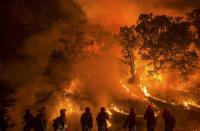
Update on state of Canada’s mountain regions looks at human scale of ecological disaster wrought by changing climate. “Events that a decade ago we would call ‘100-year events’ are quickly becoming the norm,” said one researcher. We need to talk “about ways we can coexist with fire because it is our new reality.”
-
-
Rising seas threaten Australia’s major airports – and it may be happening faster than we think
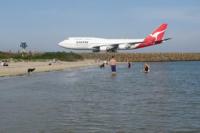
Most major airports in Australia are located on reclaimed swamps, sitting only a few meters above the present-day sea level. And the risk of sea level rise from climate change poses a greater threat to our airports than we’re prepared for. Given the significant disruption cost and deep uncertainty associated with the timing of sea level rise, we must adopt a risk-based approach which considers extreme sea level rise scenarios as part of coastal infrastructure planning.
-
-
Rural areas more vulnerable to sea-level rise
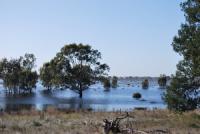
Type “sea-level rise” in an internet search engine and almost all the resulting images will show flooded cities. But there is a growing recognition that sea-level rise will mostly impact rural land–much of it privately owned—where existing knowledge is insufficient o best inform private and public decisions on how to cope with the threat.
-
-
Earthquakes or tiger attacks: understanding what people fear most can help prevent disasters
Understanding what people worry about is crucial to preparing for natural hazards such as earthquakes and mitigating their effects. To prevent disasters, local people, municipal authorities and national governments all need to pull in the same direction – especially when budgets are low for disaster planning. But if residents feel that their everyday fears are ignored by those in power, they may disengage, leaving authorities unable to influence their behavior in a time of crisis.
-
-
Can we prepare for climate impacts without creating financial chaos?
Likely sooner than we think, the destruction that warmer global temperatures are inflicting — through record floods, wildfires, droughts, and hurricanes — could physically overwhelm our ability to maintain many communities in their existing form. Communities face a tricky dilemma as climate changes: How to prepare for impacts without scaring away homeowners and investors and setting off a damaging economic spiral.
-
-
Preparing low-income communities for hurricanes begins with outreach
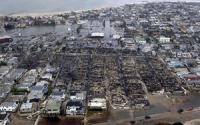
Interviews with economically disadvantaged New Jerseyans in the areas hardest hit by Superstorm Sandy yield advice for future disasters.
-
-
Cities can save lives, resources by using a vulnerability reduction scorecard
A new planning tool enables communities to effectively reduce their vulnerabilities to hazards across their network of plans – including transportation, parks, economic development, hazard mitigation, emergency management and comprehensive land use.
-
-
The costs of extreme weather
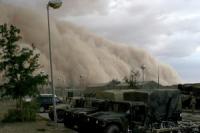
An expert tells lawmakers that there is one “underappreciated” fact in discussions about the costs of climate change: “small shifts in long-term average conditions — what we call climate — can have a large effect on the frequency of extreme weather events.” Examples: “In 2017, Hurricane Harvey caused an estimated $125 billion in losses, with an estimated 200,000 homes experiencing damage. Ongoing flooding in the upper Midwest is sure to produce agricultural losses alone in the billions of dollars, and extreme drought across much of the U.S. in 2012 caused $33 billion in losses.”
-
-
The fundamental challenges of living with wildfire
Wildfires can have dramatic impacts on Western landscapes and communities, but human values determine whether the changes caused by fire are desired or dreaded. This is the simple - but often overlooked - message from a collaborative team of researchers.
-
-
Floods will cost the U.K. billions, but AI can help make sewers the first defense
The U.K. will need to spend £1 billion a year on flood management to avoid the worst consequences of climate change, according to the national Environment Agency. Coastal defenses – including sea walls, buffer areas and evacuation plans – can help to protect towns and cities against flooding from storm surges. But inland flooding caused by excess rainwater requires more nuanced solutions. Today, artificial intelligence (AI) can use data to help make decisions about how water should flow in and around human settlements, to avoid the worst effects of flooding.
-
More headlines
The long view
The Surprising Reasons Floods and Other Disasters Are Deadlier at Night
It’s not just that it’s dark and people are asleep. Urban sprawl, confirmation bias, and other factors can play a role.
Why Flash Flood Warnings Will Continue to Go Unheeded
Experts say local education and community support are key to conveying risk.
